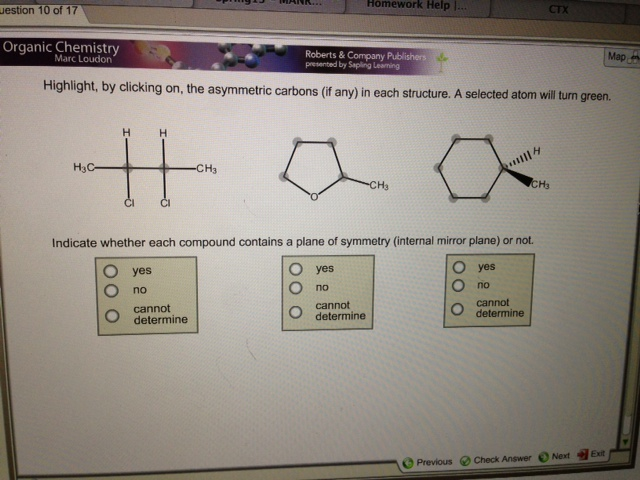

There are 20 common amino acids present in natural proteins and each of these contain the same backbone. The name "amino acid" is derived from the fact that all amino acids contain both an amino group and carboxyl-acid-group in their backbone. Glyceraldehyde-3-phosphate is a high-energy intermediate that may then move into the glycolysis cycle, which provides the body with a way of extracting energy to make ATP, which can then be used to power other metabolic functions, such as muscle contraction. Terminology related to techniques used in the determination of stereochemistry are largely excluded as well as terms used to describe reaction mechanisms.\) Many of the symbols used in stereochemical nomenclature are mentioned but details of their assignment or their incorporation into chemical names are left to the appropriate recommendations. Some examples of symmetry elements in simple molecules may be examined by Clicking Here. It is possible to make L-glucose (its mirror. The term stereocenter, also called stereogenic center, is often used synonymously with the term chiral center.

1 the chiral center is an asymmetric carbon atom. What are the examples of chiral compounds One example of a chiral molecule is glucose, that naturally only occurs in the so-called right-hand variety, called D-glucose or dextrose (dexterLatin for right). 3: If a chiral center is a carbon atom, it can also be called an asymmetric carbon atom. (ii) Asymmetry: The absence of all symmetry elements. 1-choloropentane does not contain any asymmetric carbon atom, Thus it is not chiral compound. Some misleading terms are included together with guidance on correct usage or acceptable alternatives. (i) Dissymmetry: The absence of reflective symmetry elements. Consider 2-butanol, drawn in two dimensions below. Additional terms have been added from inorganic and macromolecular chemistry. chiral carbon asymmetric carbon optically active carbon stereo carbon stereo center chiral center Let's apply our chirality discussion to real molecules. Consequently, for this compound there are two possible enantiomers indicated as d and l. Glyceraldehyde has one asymmetric carbon. The vertical lines project away from the viewer. It is located at the point where the bond lines cross. It extends the list of those defined in the IUPAC Nomenclature of Organic Chemistry, Section E: Stereochemistry (Recommendations 1974) and includes some terms from the Glossary of Terms used in Physical Organic Chemistry (Recommendations 1994). The carbon atom at the chiral center is usually not shown in this convention. Two mirror images of a chiral molecule are called enantiomers or optical isomers. It is denoted by an asterisk () on it as shown below. (b) Asymmetric carbon atom: A tetrahedral carbon atom which is bonded to four different atoms or groups is called an asymmetric or chiral carbon atom. Also the presence of an asymmetric carbon atom is often the feature that causes chirality in molecules. (a) Optical activity is the ability of chiral molecule to ratate plane plarized light. Le Bell Van Hoffs Law states that the number. Isomerism is a key concept in chemistry, and understanding the relationships that exist between different isomerscompounds made up of the same atoms, but arranged in different mannersis not only. A molecule is considered chiral if there exists another molecule that is of identical composition but which is arranged in a non-superposable mirror image. This is a glossary of the more important, and most widely-used, stereochemical terms. Asymmetric carbon atoms (chiral carbons) are carbon atoms bonded into four different types of atoms or groups.

Eintragstyp Entry Type Definition Eintragssprache Entry Language Englisch English Abstract


 0 kommentar(er)
0 kommentar(er)
